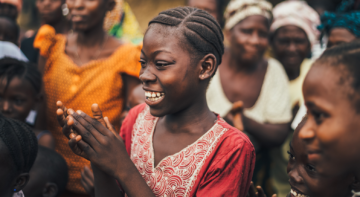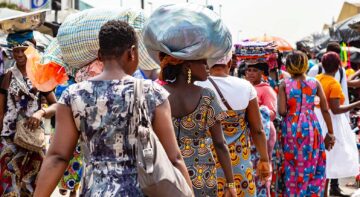Blogs

The current COVID-19 emergency demonstrates, if more evidence were needed, how interconnected the world is, and how vital it is for scientists to continue to work together across national and regional boundaries. Despite the economic, political and social impacts of the crisis, this World Science Day for Peace and Development we should reflect on the progress made in global development as a result of scientific cooperation.
In low- and middle-income countries (LMICs), we have seen a great increase in productivity and in the quality of research and innovation. These include major multi-country clinical trials and advances in health, mobile technology and data sharing, and the spread of affordable, sustainable energy technologies.
This progress has been pushed forward by the Sustainable Development Goals, agreed by all countries in 2015 as a “shared blueprint for peace and prosperity for people and the planet, now and into the future”. Countries have chosen which of the 17 SDGs to focus on, and this has created coalitions of shared interest around these goals.
As a leader in global development, research and innovation, the UK has contributed £5.6 billion over the past five years to international scientific collaboration. UK Official Development Assistance (ODA), leveraged through joined-up programmes and funding partnerships with other global funders, has created many opportunities for interdisciplinary collaboration, and increased research productivity worldwide, to the benefit of all. It has also supported research collaborations in fragile states, humanitarian emergencies and conflicts.
However, more needs to be done to ‘level the playing field’ for LMIC scientists and research groups. I would make four broad recommendations to funders and policymakers:
First, there should be an increase in equitable partnerships. This leads to the co-creation of ideas and co-authorship of research papers. Crucially it encourages scientifically excellent research, driven by the needs of research users and policymakers in LMICs. Such research is likely to have an impact because of its contextual relevance and ownership by LMIC stakeholders.
Most UK ODA-funded research strengthens the research capacity of researchers in the UK as well as LMICs. In light of that fact, more programmes should be led by LMICs. This is now being implemented in new programmes by funders, notably UK Research and Innovation, and the National Institute of Health Research, with guidance on good practice collated by the UK Collaborative on Development Research.
Secondly, there is now greater expectation from the UK and LMICs that ODA-funded research should involve and engage communities. Research teams are encouraged to dedicate time and effort from the outset to engage, share knowledge and empower communities to have shared ownership of research. This can lead to more accurate data, more use of results, and acceptance of future projects.
It also enriches the research process for researchers. For example, working in informal settlements in Nairobi, researchers found poor sanitation was making children sick with diarrhoea, and engaging with the communities led to great improvements. We need dedicated funding or greater flexibility with funding for better community involvement.
Thirdly, open access to research findings aims to make the published outputs of research widely and freely accessible to all, under conditions that allow maximum reuse. Open access is central to the UK Government’s ambitions. Its research and innovation funding agencies are reviewing their policies on it.
As part of this work, they commissioned the international development charity, INASP, to consult on the challenges and opportunities that open access presents to LMIC stakeholders. Their report, published in October, found that under the current open access models, high Article Processing Charges disadvantage researchers from LMICs who often have to pay out of their own pockets. To ensure more equitable policies, funders must continue working collaboratively to review their open-access policies and join up with initiatives such as Plan S.
Fourthly, support for individuals is crucial in order to conduct high-quality research and to train upcoming generations that are the future researchers in a developing country. Stronger local research institutions and networks should be a key goal of research capacity strengthening efforts. They provide the infrastructure and architecture on which researchers depend. It is vital to strengthen the capacity of the research and innovation in LMICs. This includes people, the organisations they work in, and the legal and regulatory systems that affect them. Doing this will produce good research. It will also allow it to be put to good use in policy and practice.
There are now many exciting examples of how these approaches are working all over the world, including notable successes from UK-funded partnerships. Some of these relate directly to peace and health in conflict situations, such as the ‘LINKS’ group on early childhood development for peacebuilding, working in six countries, and the NIHR global health research group on post-conflict trauma, which is training clinicians in surgical techniques for gunshot and landmine injuries, and developing a thriving research community between the UK, Sri Lanka, Gaza and Lebanon.
Others focus on technological infrastructures, such as the Development for Africa through Radio Astronomy (DARA) project, which uses the Square Kilometre Array as a catalyst to promote partnerships, STEM education and economic development in eight partner countries across southern Africa. And there are many examples of how UK-supported scientific collaboration is strengthening the capacity of countries globally to respond to the many challenges thrown up by the COVID-19 emergency.
World Science Day is an opportunity to renew our commitment to shared scientific endeavour and to forge stronger partnerships for science, peace and development.
This article was first published by Sci Dev Net, “Level the playing field for science in the global South” on Nov 11, 2020.
Related Posts





